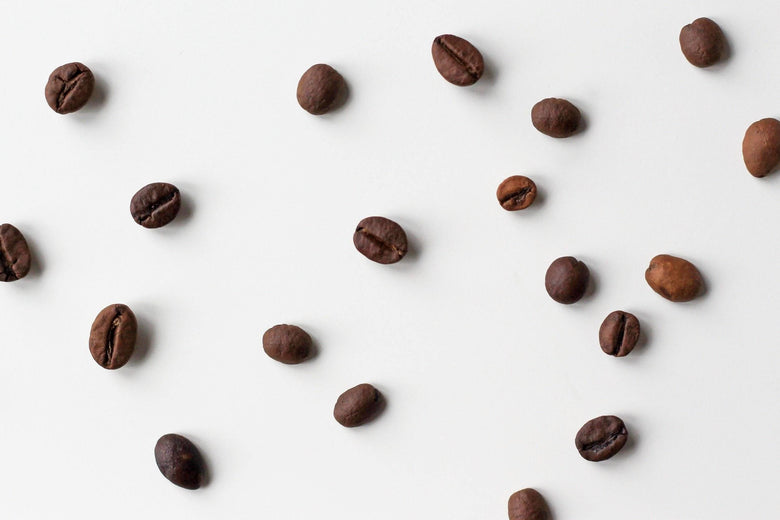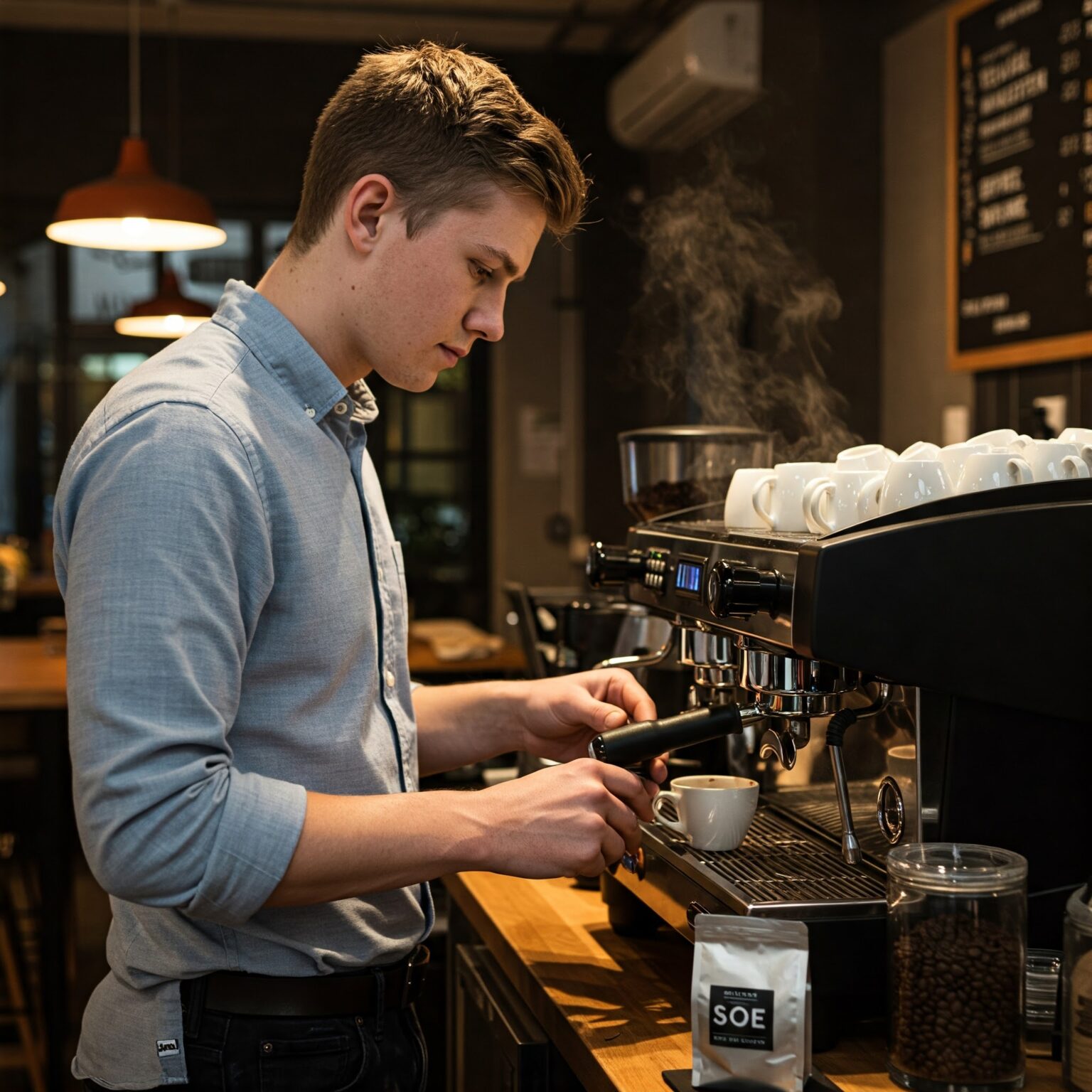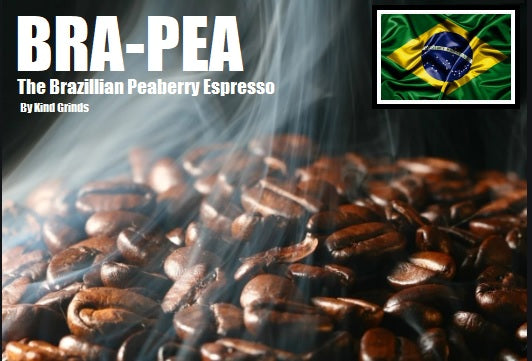SOE Single Origin Espresso – Showcasing Flavors from One Region
Wiki Article
Checking Out the Rich Flavors of Coffee Beans: a Deep Dive Into Espresso and Blended Coffee Beans
When you check out the rich tastes of coffee beans, you reveal a complex globe where each selection brings its very own character to your cup. Understanding the origins, refining techniques, and toasting methods can transform your coffee experience. As you navigate via the art of coffee and the imagination behind combined coffees, you'll start to appreciate the nuances that make each sip distinct. What you'll discover following could transform the method you enjoy your morning brew.The Origins of Coffee Beans: Discovering Terroir and Taste Profiles
When you take a sip of coffee, you're not simply enjoying a drink; you're experiencing a rich tapestry of tastes shaped by the beans' origins. Each area produces unique flavor accounts influenced by climate, elevation, and soil. Beans from Ethiopia commonly rupture with brilliant, fruity notes, while those from Colombia often tend to supply a balanced, nutty sweetness.As you check out different origins, you'll notice how terroir-- the ecological aspects influencing a plant-- plays an important duty - Single Origin Espresso. The exact same coffee range can taste dramatically various relying on where it's grown
When you think about these elements, you begin to appreciate the complexity behind your cup. Each sip narrates of the land and the farmers that supported the beans. So, next time you indulge, consider the trip your coffee took prior to it reached your hands, and enjoy those detailed flavors that mirror its origin.
Recognizing Coffee: The Art and Science Behind the Brew
When you consider coffee, it's not almost the strong taste; it's additionally about the strategies that bring it to life. Recognizing how various prep work approaches effect preference can change your brewing experience. Allow's discover the intricacies of espresso preparation and discover the one-of-a-kind flavor accounts that make each mug special.Coffee Preparation Strategies
Espresso preparation is both an art and a scientific research, combining accurate techniques with a deep understanding of coffee. To begin, you'll wish to choose top notch, newly roasted beans and grind them finely for suitable removal (Single Origin Espresso). The work dimension is important; as well crude, and your espresso will certainly be weak, as well great, and it'll be bitterNext, tamp the premises evenly in the portafilter to assure uniform removal. When you secure it into the device, aim for a developing temperature between 190 ° F and 205 ° F.As you pull the shot, look for the perfect removal time-- around 25-30 seconds. The result should be a rich, luscious coffee with a gorgeous layer of crema on the top. With method, you'll grasp these methods.
Taste Accounts Clarified
The world of espresso provides a rich tapestry of flavor profiles that can boost your coffee experience. Light roasts frequently showcase brilliant acidity and lively tastes, while dark roasts existing much deeper, bolder tones.A well-crafted mix might harmonize the bright notes of an Ethiopian bean with the rich, chocolatey touches of a Brazilian bean. Welcome the journey of discovering espresso's varied tastes, and you'll transform your coffee ritual right into an amazing experience.
Handling Approaches: Exactly How They Influence Flavor and Fragrance
While it may seem that the origin of coffee beans is one of the most substantial variable in identifying their flavor and fragrance, the processing methods used post-harvest play a just as essential function. You'll find that these approaches can significantly modify the last preference account of your mug.For instance, the washed procedure eliminates the fruit from the beans before fermentation, often causing a cleaner, brighter taste. At the same time, the natural process leaves the fruit intact during drying out, resulting in a sweeter, fruitier profile.
Other techniques, like honey processing, strike an equilibrium, enabling some fruit mucilage to remain, giving a special intricacy.
Each processing technique communicates with the beans' fundamental qualities, improving or muting particular tastes and aromas. So, when you sip that coffee or mixed coffee, remember that the trip from cherry to mug is affected not simply by origin yet additionally by how those beans were refined.
Toasting Methods: Unlocking the Full Possible of Coffee Beans
Roasting strategies are important for exposing the full possibility of coffee beans, as they change raw, green beans into the fragrant, flavorful coffee you delight in. The option of roasting technique-- light, medium, or dark-- substantially affects flavor accounts.You can explore toasting times and temperature levels to discover your ideal brew. A slower roast at reduced temperature levels permits complicated flavors to create, while a quicker roast can escalate anger. Take note of the cracks throughout toasting; the very first crack suggests a light roast, while the second crack signals a dark roast. By mastering these strategies, you'll disclose a globe of flavor, boosting your coffee experience to brand-new heights. Take pleasure in every sip, understanding the care that entered into your mug!
The Magic of Blended Coffee: Producing Unique Flavor Experiences
Developing an unique taste experience with combined coffee can change your morning ritual into an expedition of taste. By incorporating different beans from numerous regions, you can disclose a symphony of tastes that elevate your cup to new heights. Each blend offers a distinct account, balancing acidity, body, and sweet taste to develop something genuinely special.When you select a blend, you're not simply picking a coffee; you're picking a trip across diverse landscapes and cultures. Experimenting with different mixes allows you to uncover your individual favorites, whether you delight in fruity notes or abundant, chocolatey undertones.

Tasting Notes: Acknowledging the Subtleties in Your Cup
As you sip your coffee, you may see a range of tastes dancing on your palate, each exposing the intricacies of the beans. You may taste the brilliant level of acidity evocative citrus or the deep, rich notes akin to dark chocolate. The sweetness might stimulate honey or sugar, stabilizing the overall profile wonderfully.Take notice of the body of the coffee-- does it really feel light and ventilated, or is it full and creamy? The coating, also, offers ideas; a lingering aftertaste may mean nuttiness or floral undertones.

Do not neglect to discover the unique qualities of different origins, as each area presents unique flavors - Single Origin Espresso. For instance, Ethiopian coffees typically present fruity notes, while Colombian beans might showcase a much more rounded sweetness. By acknowledging these subtleties, you'll deepen your gratitude for each and every cup, raising your coffee experience to new elevations

Brewing Approaches: Making The Most Of Taste Removal for every single Bean
When you explore the different developing methods, you'll find that each technique can dramatically affect the taste profile of your coffee. From French press to pour-over, each technique removes different substances, enhancing or silencing specific notes. Utilizing a French press allows oils to stay in the brew, producing a richer taste, while pour-over highlights quality and illumination.Temperature and grind size likewise play crucial roles. A coarser work works best for cool brews, while a fine work is excellent for coffee. Trying out water temperature level-- between 195 ° F and 205 ° F-- can disclose hidden tastes, as well.
Do not fail to remember regarding soaking time; a fast extraction can lead to sour notes, while over-extraction might produce anger. By adjusting these variables, you can take full advantage of flavor extraction and really raise your coffee experience. Take pleasure in the trip of uncovering what approach finest fits your taste!
Frequently Asked Questions
What Is the Suitable Water Temperature Level for Developing Coffee?
The suitable water temperature level for brewing coffee's between 195 ° F and 205 ° F. If you use water that's too hot, you'll over-extract flavors; too cold, and you will not draw out enough. Go for that pleasant place for the best brew!Exactly How Does Work Dimension Influence Coffee Taste?
Work size significantly influences coffee taste. Better grinds remove a lot more flavors and oils, resulting in a bolder taste, while coarser grinds return a lighter taste. Readjusting grind size helps you achieve your wanted coffee account.Are There Health Benefits Associated With Alcohol Consumption Coffee?

What Is the Distinction In Between Arabica and Robusta Beans?
Arabica beans are smoother and sweeter, commonly featuring fruity flavors, while robusta beans are stronger with a bitter preference and higher high levels of caffeine web content. You'll observe these differences in fragrance and developing experience.How Can I Store Coffee Beans for Quality?
To save coffee beans for quality, maintain them in an airtight container, far from light, moisture, and warm. If you just grind what you need right prior to developing., SOE you'll keep their taste longer.Exploring the Rich Tastes of Coffee Beans: a Deep Dive Into Coffee and Blended Coffee Beans.
When you discover the rich flavors of coffee beans, you uncover a complex world where each variety brings its own personality to your cup.When you take a sip of coffee, you're not just taking pleasure in a beverage; you're experiencing a rich tapestry of flavors formed by the beans' beginnings.Roasting techniques are crucial for revealing the full potential of coffee beans, as they change raw, environment-friendly beans right into the fragrant, delicious coffee you take pleasure in.As you sip your coffee, you may observe a spectrum of tastes dancing on your palate, each disclosing the complexities of the beans.
Report this wiki page